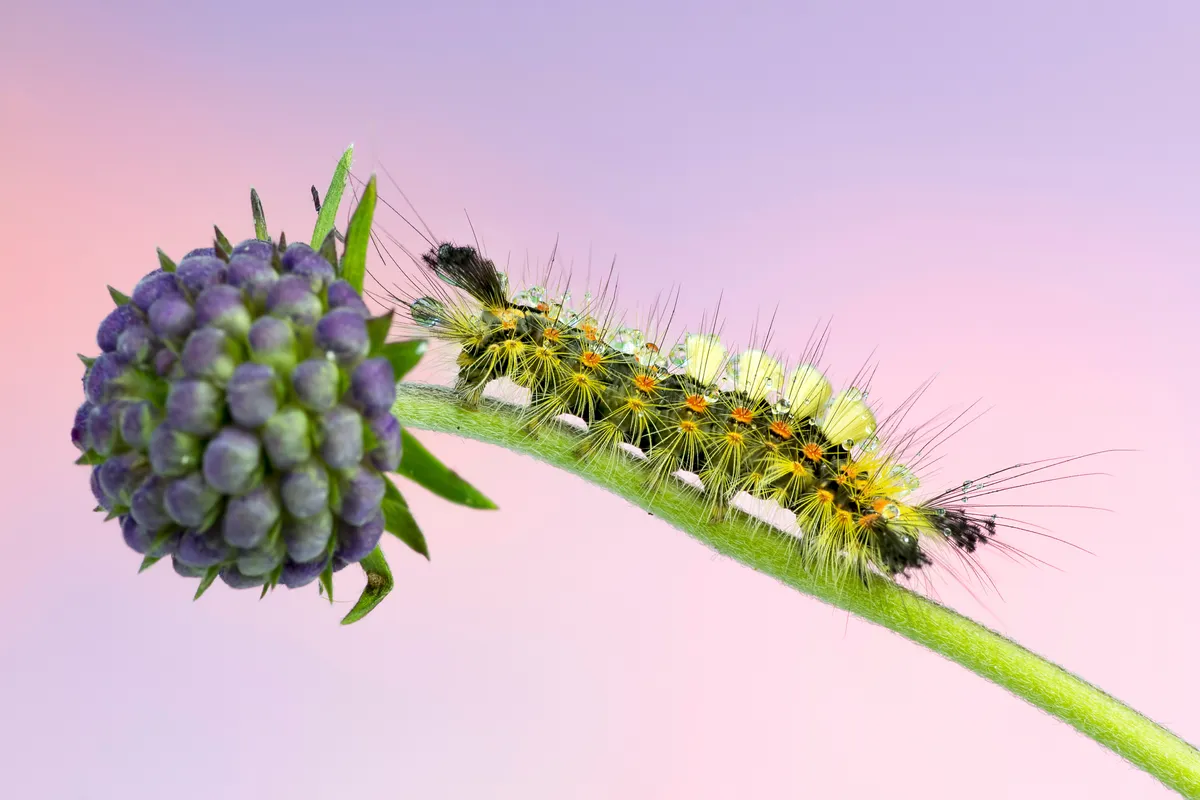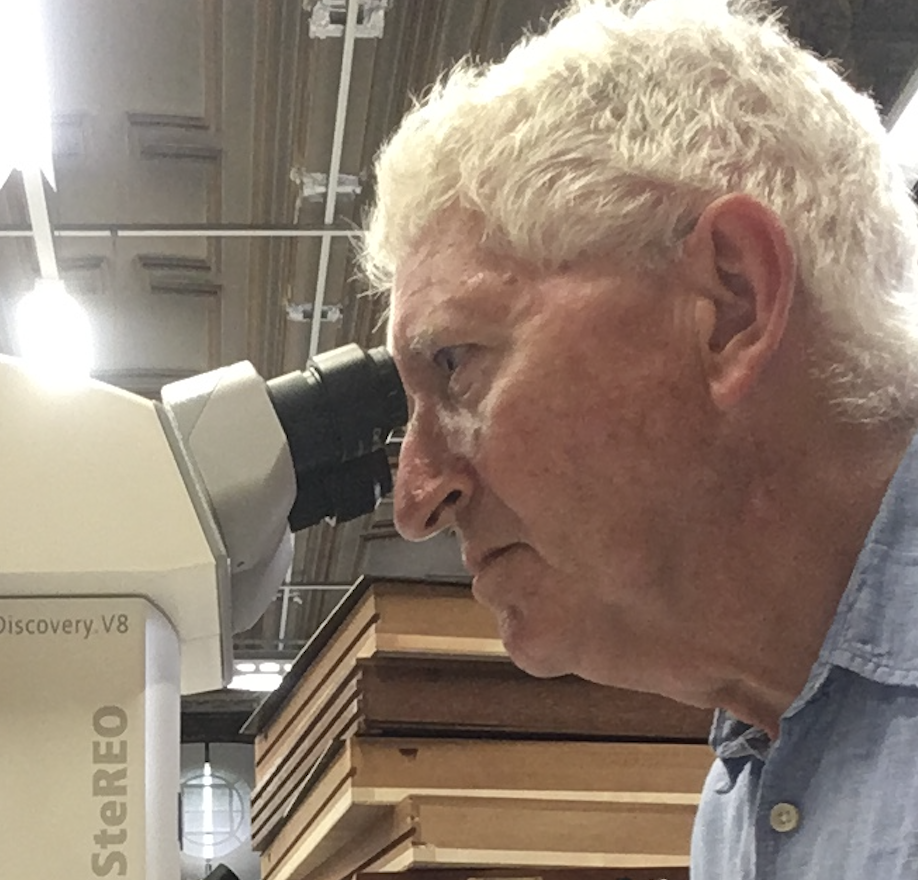A caterpillar's transformation into a butterfly has fascinated humans for generations. After all, the metamorphosis of a stubby, crawling, land-based insect into an airborne fairy is the perfect metaphor for change, improvement, escape, even life after death.
But at its core is a prosaic and very basic biological urge: the need to eat and grow in safety, then – and only then – to disperse.
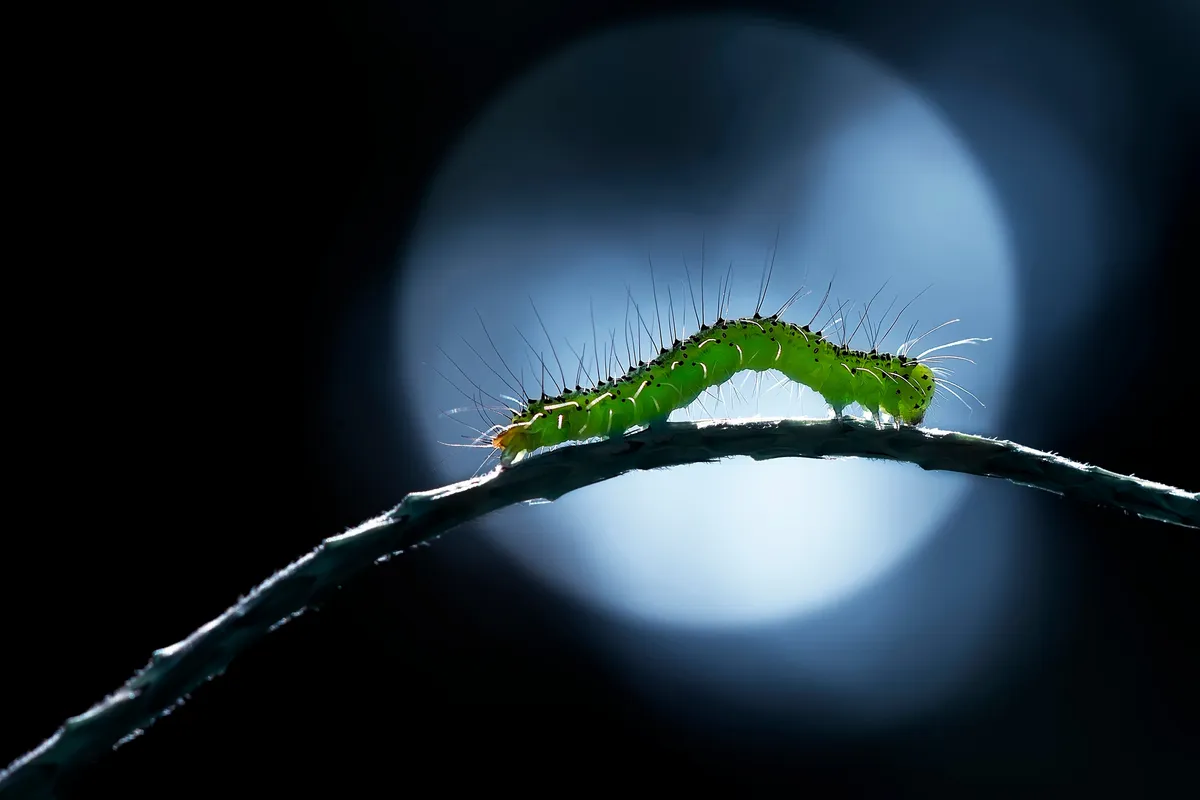
How does a caterpillar turn into a butterfly?
The caterpillar is a veritable eating machine – a cylindrical, plant-digesting bag. During the few days or weeks that it is active, it will devour many times its own weight in whatever its chosen foodplant might be.
As in all insects, it is the larval stage that does almost all of the eating, and certainly all of the growing. The caterpillar does this quietly and secretively.
Incomplete metamorphosis
In our anthropocentric world, we might expect growth and development to be uniformly incremental – from small (but fully formed) baby to similar (but much larger) adult. Some insects do grow this way – earwigs, plant bugs, cicadas, termites, grasshoppers and cockroaches.
Hatchlings resemble miniature adults, with wing-buds gradually increasing until the fully winged adult size is achieved. This is called hemimetaboly, a seemingly half or partial change.
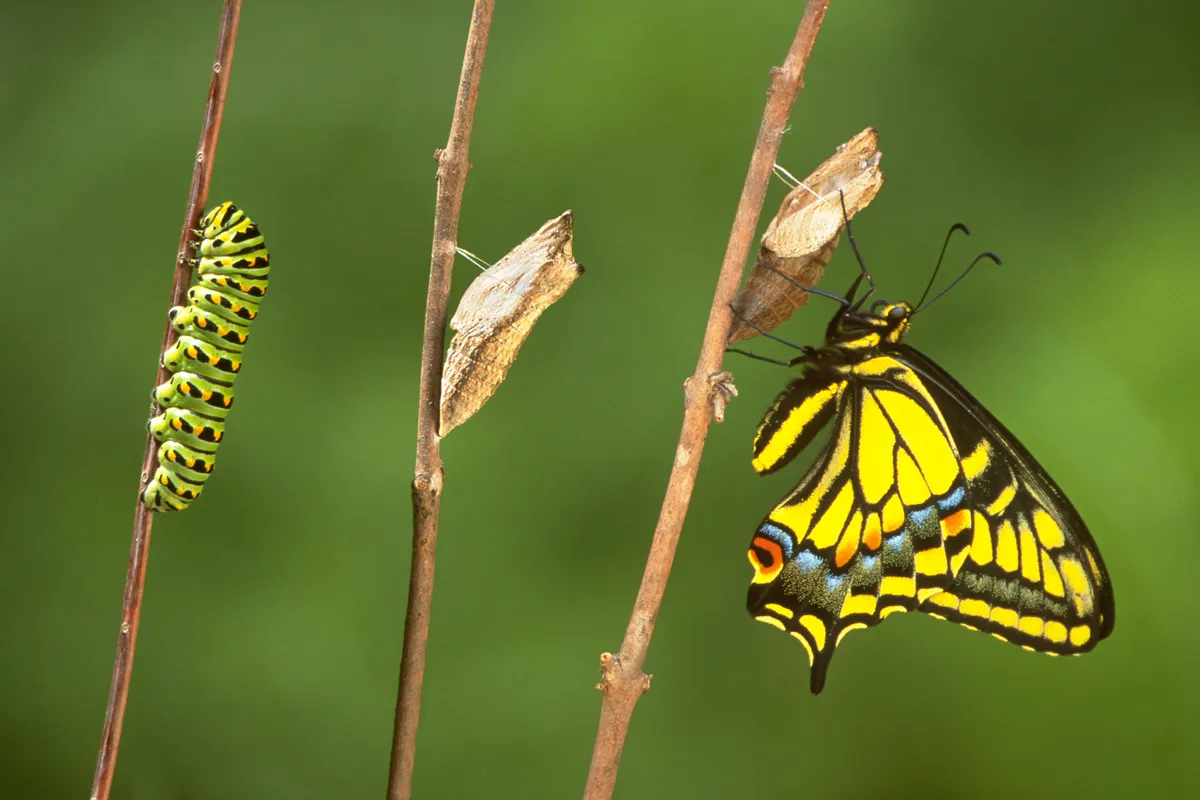
Holometaboly, a full change, is the complete – and often dramatic – metamorphosis from worm-like larvae to large-winged adults (in entomological jargon, imagos or imagines). It’s an extremely advanced mechanism, a highly sophisticated chemical suppression of developmental processes.
Though only 9 of 26 insect orders are holometabolic, this accounts for 80 per cent of all insects (butterflies, beetles, moths, flies, bees, wasps and ants are majority stakeholders). In short, this is a very successful strategy for growth and development.
Want to see the process for yourself? Rearing caterpillars is super easy and fascinating to watch, and we've got everything you need to know right here:
© Science Photo Library/Getty
Caterpillars are primed to become butterflies from birth
Even in the smallest caterpillar, just hatched from the minuscule egg, bundles of cells are already primed, destined to become adult features such as antennae, wings, legs and genitalia. Called imaginal discs (being flat and round), they are prevented from growing and developing by a constant wash of a juvenile hormone.
As the larva feeds, its gut, muscles and some other internal organs grow and develop, but the imaginal discs are temporarily suppressed and remain dormant. The caterpillar behaves like a free-living, eating, growing but developmentally repressed embryo.
When it reaches a critical size, a burst of moulting hormone, ecdysone, is released. It will shed its skin several times in response to ecdysone, each time forming a new instar (stage), but juvenile hormone keeps it a caterpillar, preventing onward development until, as it nears full size, concentrations of the latter hormone decline.
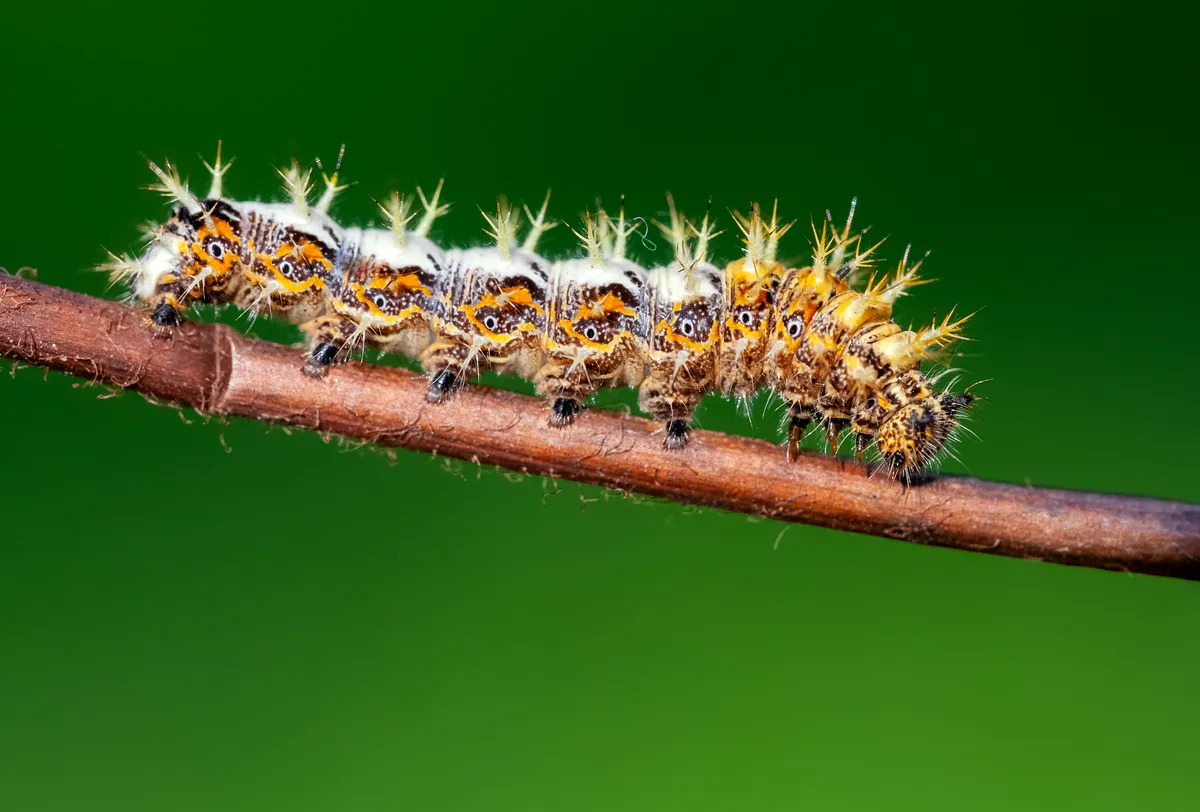
Caterpillar metamorphosis – from caterpillar to butterfly
In the fifth and final caterpillar instar, the imaginal discs have already begun to emerge from their enforced dormancy and started to grow. Juvenile hormone now falls below a threshold and the next ecdysone surge stimulates the change into a chrysalis.
The flattened imaginal discs now start to develop unhindered. Each folds into a concave dome, then a sock shape; the centre of each disc is destined to become an extremity – the tip of a leg or the end of a wing.
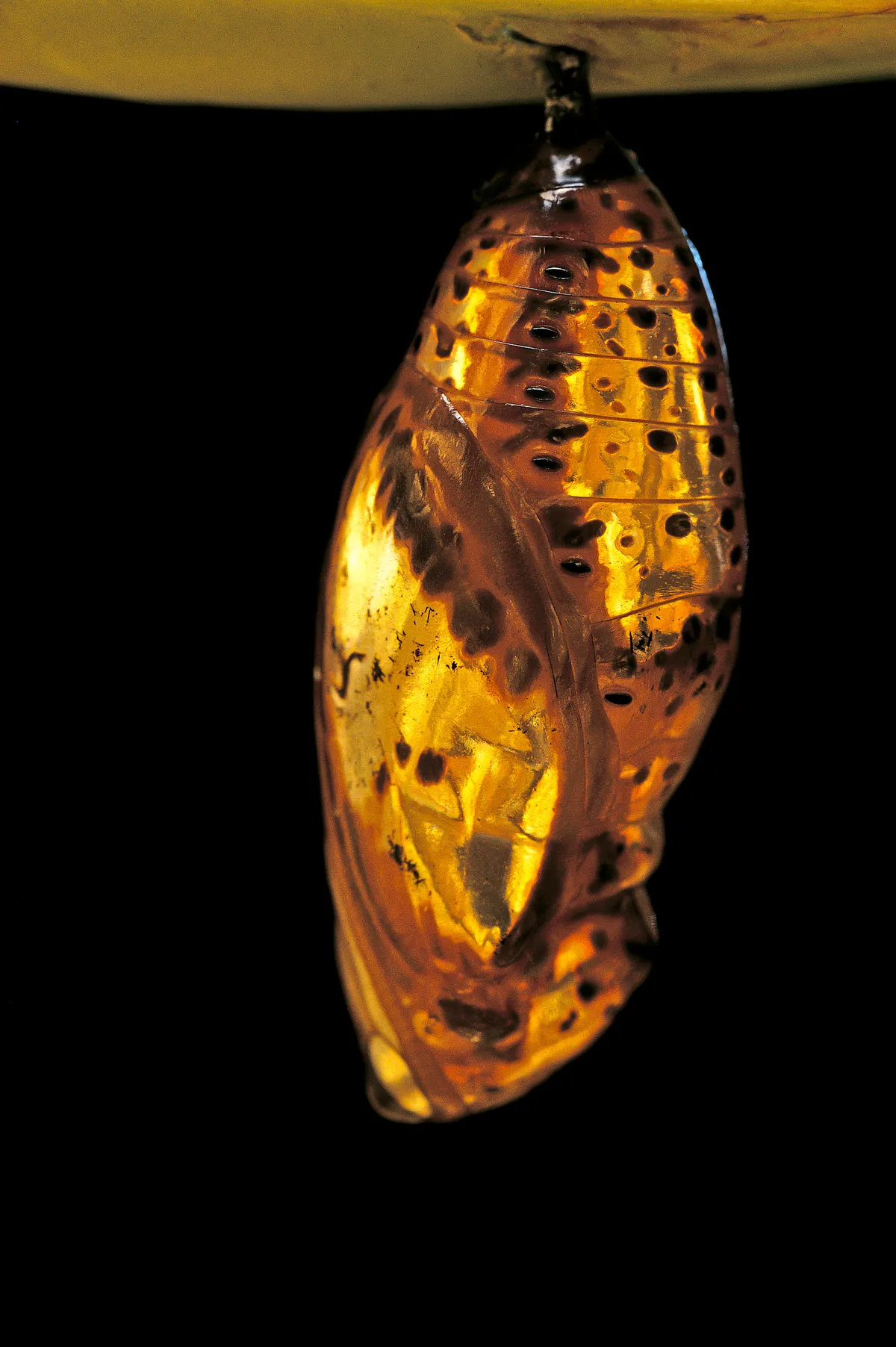
The bulk of the caterpillar’s pudgy mass is recycled into the adult features that are meshing together inside the tough shell of the chrysalis. The interior is, at this stage, mostly a nutrient soup, feeding the embryonic imaginal discs as they complete their delayed development.
The last burst of ecdysone occurs amidst almost zero juvenile hormone – and stimulates the emergence of the adult butterfly to mate, disperse and lay its eggs.
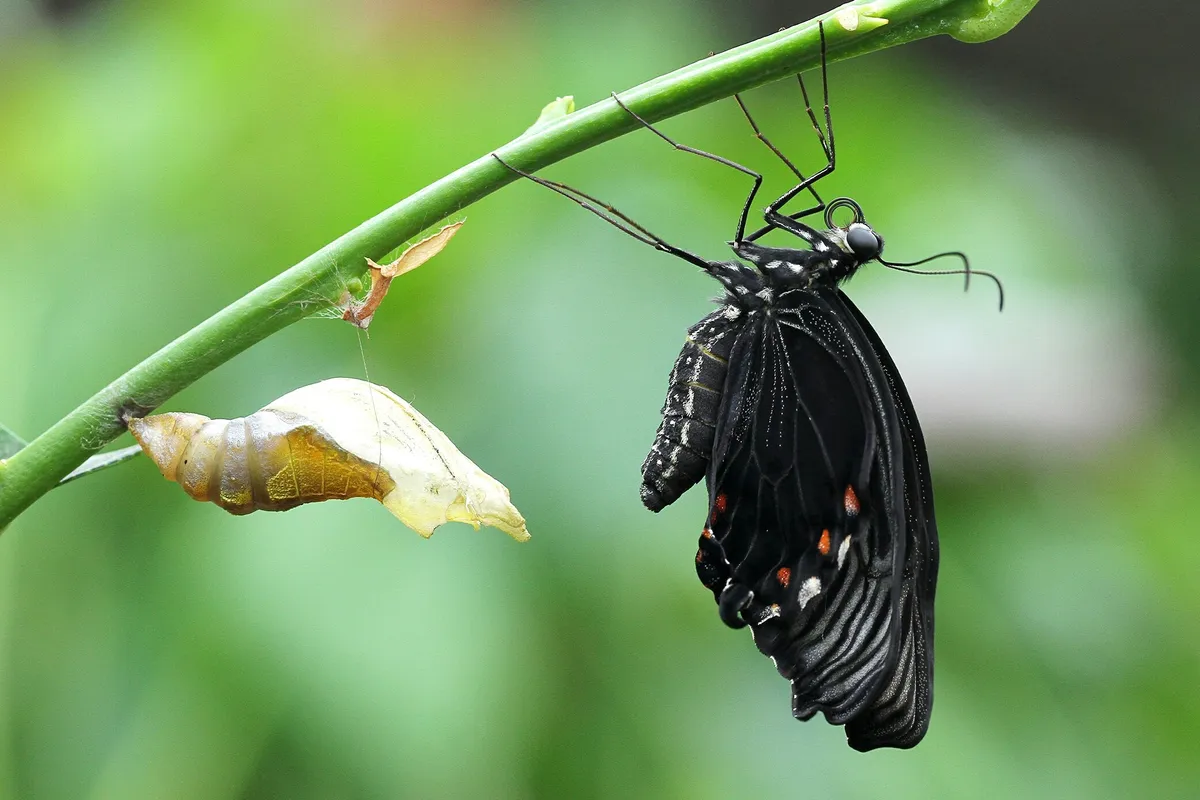
How a caterpillar's transformation is controlled
- There are usually six metamorphic transformations in the butterfly growth path, each stimulated by a burst of moulting hormone ecdysone (A) from the prothoracic gland.
- Juvenile hormone (JH), secreted by the corpus allatum gland, slows progress towards adulthood: while levels of JH are high, it keeps the caterpillar a larva.
- However, JH secretion slows over time; only when it falls below a critical level (B) does a moult result in a chrysalis and pupation.
- Now comes a massive redistribution of nutrients, and adult features can finally develop. With JH levels virtually down to zero, the final moult (C) is into an adult.
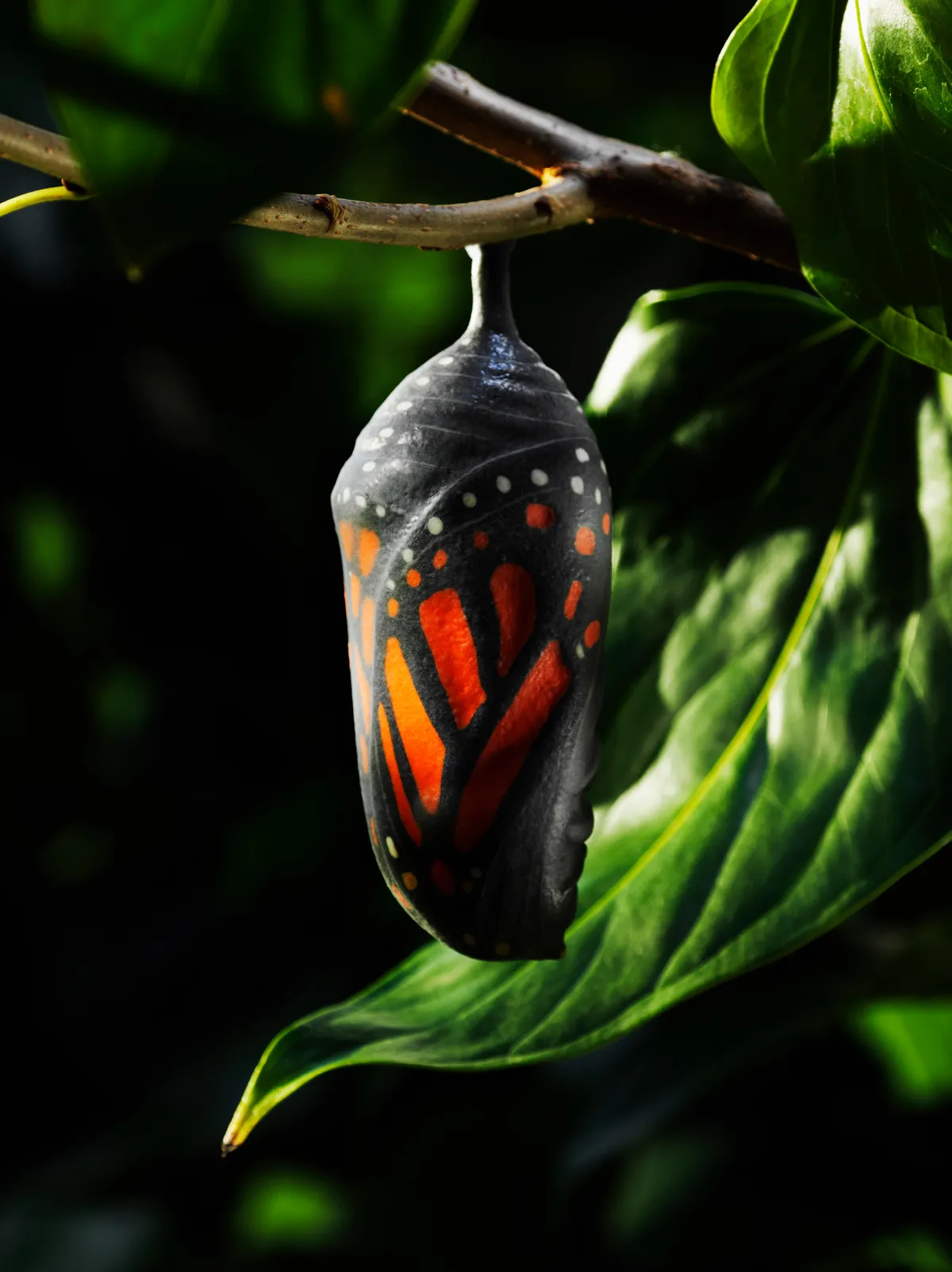
Do all caterpillars turn into butterflies?
No, some caterpillars turn into moths. If you see a caterpillar, it will definitely change into a butterfly or a moth and it can't become anything else, but there's no reliable way to know which it will become just by looking at it.
The only way to know for sure is if you can identify the species of butterfly or moth that the caterpillar will become, as they tend to be distinctive and fairly easy to identify.
